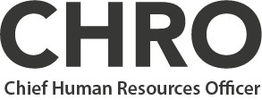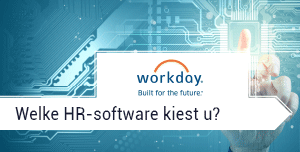Rene Latten, HR Director PPG Northern Europe: Business acumen and execution are key

“If you look at the competencies we need, business acumen is key. It goes hand in hand with partnership and relationship management,” says Rene Latten, HR Director at PPG Northern Europe. As far as the core competencies of the HR team are concerned, Latten adds that it is also important to have the right communication and consultation skills, be able to problem solve and execute effectively on tasks. “A lot of HR people are talking about strategy because it’s interesting to talk about, but in the end, when you talk about execution, it’s missing,” he says.
Latten has more than 25 years of experience in HR, having first started his career at KLM, Royal Dutch Airlines. Come April 2016, he will have been with PPG Northern Europe for six years. Asked what the most effective traits of an HR director are and what style of leadership PPG Northern Europe prefers, Latten answers that political savvy is important; what’s happening inside and outside. “As HR director you are a business partner, so the business acumen part is very necessary, as is organisational sensitivity. These days, humour is also important.”
Latten sees himself as “more a coach, looking for output” than a directive leader. He regularly engages in open discussions with his team to get their thoughts and suggestions. “In the manufacturing environment we are very hands on, and we believe in the value of team work,” he says. “While we are in a matrix structure, meaning if you look at the country we have different business units that each operate their own units, we have common processes as far as HR is concerned. We don’t want every business unit having a separate process. So we communicate to come up with synergies. There’s always the tension between what business needs and what HR needs and how we harmonise on processes and find synergy.” Latten says that for the best effect he divides his team across the more commercial activities and manufacturing activities, as the company has HR business partners across the two. “We have a centre of excellence, with combined expertise,” he explains.
According to Latten, one of the greatest challenges PPG Northern Europe has faced in recent years, and indeed which it is still facing, is the economic downturn. “After the financial crisis we landed up in the economic crisis. If we look at our manufacturing volumes, these are still down compared to 2008, which is difficult.” From an HR perspective he says it is important to be a business partner as far as managing costs and managing growth is concerned, and also to offer support. If cost management is needed, restructuring is considered, Latten explains, and if growth is good, bonus systems are a good way to trigger better sales.
Talent management is part of strategic workforce planning, says Latten, the latter being on a higher level and of greater importance. “The way I look at it: to do strategic workforce planning you have to look at what is happening in the business. For example, if there’s an acquisition coming along, what does this mean for the workforce and for productivity? If you have an ageing workforce, for example, you have to take that into account,” he says. You need to put everything onto a three to five-year timeline and ensure you’ve got the right people in terms of quality and quantity to manage the business in the long-run, he adds.
When it comes to new hires and the question of long-term employment, Latten says there are certainly pros and cons to both. “Long-term employment helps a company build and maintain a certain culture, but sometimes, people who have been with the company a long time, don’t want to change. With short-term employment you have the opportunity to change and you can get a new culture in the organisation. Long-term is good as long as there are people who are flexible and have the right mentality when talking about changes.”
Asked whether the company places much value on big data, Latten answers in the affirmative: “I would say we are progressing in this area. Not only big data but also HR analytics – how you analyse the data and what this means in terms of forecasting.” Latten says that big data allows for the compilation of much larger reports, for example, on diversity across total hires. “So we compare this kind of data and try to find out what we are doing in terms of diversity and how attractive we have made ourselves as a company.” He adds that the data is also used to monitor internal processes and look at external benchmarks.
Looking to the future, Latten says that HR certainly has a place in business but that it needs to prove its worth and adapt to stay relevant. He says that as a true business partner, HR has to be up to speed with all divisions and company goings on at all times, able to step in when and where needed. “If I look at the environment I think the organisation will be in more of a hybrid structure,” he says. “We will be looking more at projects rather than employment – projects mean greater flexibility. We are connected 24/7 these days, which makes the way of working different, and more and more people nowadays are working from home. They work in the evenings and do something in between during the day, so the focus has shifted to be more on output than input. HR needs to focus on how best to manage that.”













